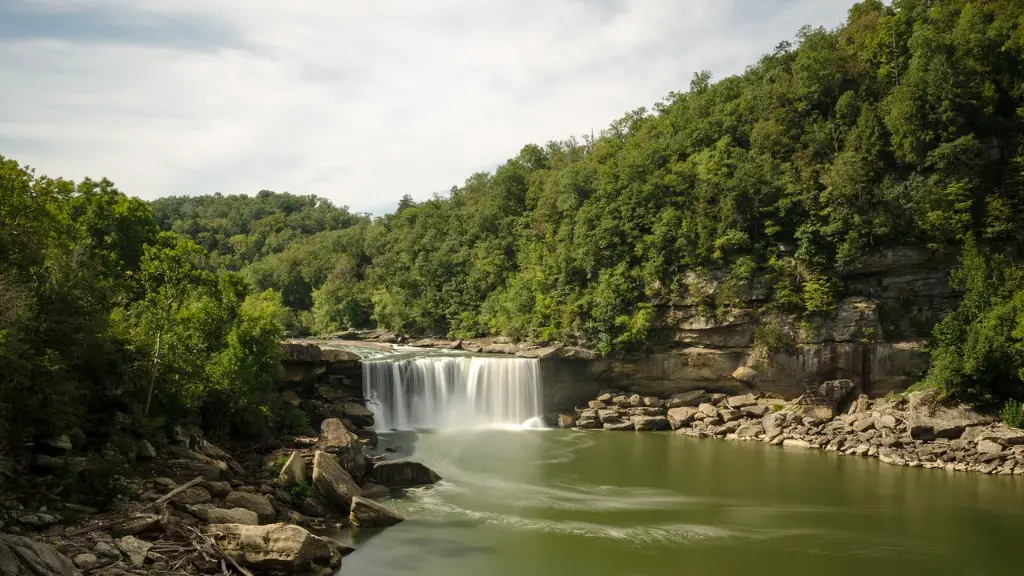Overview
The Yangtze River is the longest river in Asia and the third longest in the world. It stretches over 6,300 kilometres, flows through nine provinces of China, and empties into the East China Sea. In ancient times, it was known as the ‘Chang Jiang’ River, or the ‘Long River’, and is renowned as the spiritual and economic lifeline of the country. The Yangtze River is home to numerous villages, cities and regions, which depend upon it for their water, trade and tourism. Its name is deeply entwined with the history and myth of Chinese culture, and it has been an important source of inspiration for artists and poets alike.
Geographical Location
The Yangtze River originates in western China, in the Qinghai-Tibet Plateau (commonly known as the Tibetan Plateau). From its source, it runs south then east and south again, forming the iconic three forks of the Yarlung Tsangpo. It runs past the iconic Three Gorges Dam before entering the East China Sea near Shanghai. It is considered the longest river in Asia and the third longest in the world and is by far the largest river in China; it covers 12 provinces and municipalities, more than 20 central cities and prefectures, and around 700 urban centers. The Yangtze River is one of the most diverse rivers in the world, with many unique habitats and species of plants, animals, and fish.
History
The Yangtze River is an ancient river and has been an important part of Chinese culture, religion and history. In Chinese mythology, Emperor Yu was granted control of this great river by the heavens and is credited with stopping the floods which had plagued ancient China. In the history of Chinese politics and philosophy, the river celebrated the spirit of harmony and was often referred to as the ‘river of harmony’. The Yangtze River was instrumental in the development of Chinese commerce and industry, providing a crucial transport route for the north-south trade. Today, it continues to be a source of livelihood for millions of people living along its banks.
Environmental Impact
The Yangtze River area is one of the most heavily industrialized regions in the world. This has taken a toll on the river’s natural environment, leading to water pollution and habitat destruction. Overfishing has become a major issue, with over 20,000 tons of fish being harvested annually. Eutrophication has become an alarming concern in recent years, with excessive amounts of blue-green algae forming in the river. Poaching has also been an issue, with a number of threatened species in the area. The government has implemented a number of conservation measures, including tighter fishing regulations, protected areas, and better pollution control measures.
Economic Impact
The Yangtze River has been an important source of livelihood for Chinese people for centuries. It has provided an important source of transportation for the north-south trade, of resources for the local populations, and of energy for the provinces along its banks. Over the past few decades, the river has become increasingly important to the economy of the region. Numerous industries have sprung up along the banks, as well as a number of hydroelectric dams to generate energy. This has spurred economic growth, though also led to environmental concerns, such as the impact of the Three Gorges Dam.
Future of the Yangtze River
The future of the Yangtze River is closely linked to the future of China. This great river will continue to serve as an important source of livelihood and inspiration to the people who live along its banks and throughout China. Improved conservation efforts will be needed in order to protect its unique habitats and species, and to ensure the sustainability of the economy. Moreover, better infrastructure and regulations will need to be developed to reduce the environmental impacts from the industrial development of the region.
Conclusion
The Yangtze River is one of the most important rivers in the world and has been an integral part of Chinese culture, history, and economy for centuries. It has provided a vital source of trade and transportation, and of resources and energy to the provinces along its banks. It has been both a source of inspiration and of environmental concern. Improving conservation efforts and infrastructure measures must be taken in order to ensure a sustainable future for the Yangtze River and all the people who depend upon it.

